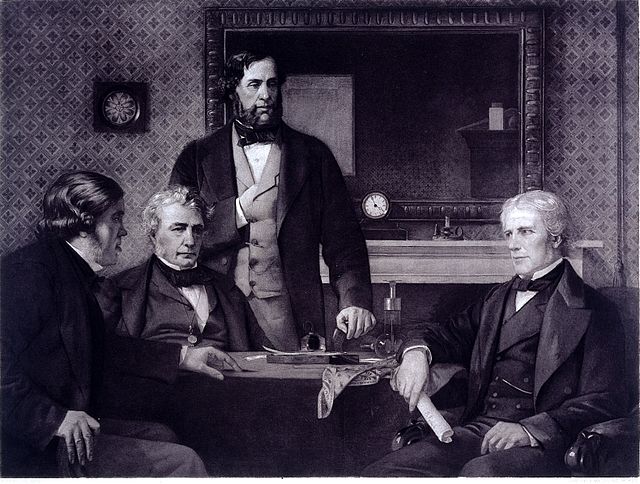Jane Marcet was an English salonnière of Swiss origin, and an innovative writer of popular, explanatory science books. She also broke ground with Conversations on Political Economy (1816), which explain the ideas of Adam Smith, Malthus and David Ricardo.
Jane Marcet
Conversations on Chemistry, Title page, Twelfth edition, 1832. Chemical Heritage Foundation
Plate from Jane Marcet's Conversations on Chemistry
Michael Faraday was an English scientist who contributed to the study of electromagnetism and electrochemistry. His main discoveries include the principles underlying electromagnetic induction, diamagnetism and electrolysis. Although Faraday received little formal education, as a self-made man, he was one of the most influential scientists in history. It was by his research on the magnetic field around a conductor carrying a direct current that Faraday established the concept of the electromagnetic field in physics. Faraday also established that magnetism could affect rays of light and that there was an underlying relationship between the two phenomena. He similarly discovered the principles of electromagnetic induction, diamagnetism, and the laws of electrolysis. His inventions of electromagnetic rotary devices formed the foundation of electric motor technology, and it was largely due to his efforts that electricity became practical for use in technology.
Faraday c. 1850s
Portrait of Faraday in 1842 by Thomas Phillips
Three Fellows of the Royal Society offering the presidency to Faraday, 1857
Faraday's grave at Highgate Cemetery, London







